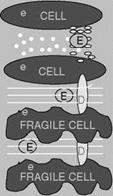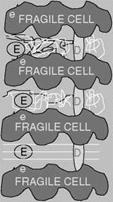New and exciting discoveries have been made in SC biology over the last decade, but more importantly the understanding of the aberration of the normal functioning of the SC in dry, flaky skin conditions has become clearer and a new model of dry skin has been described. On perturbation of SC barrier function, a futile cycle of events begins first with the superficial dehydration of the SC and subsequent release of inflammatory mediators, induction of hyperproliferation of epidermal keratinocytes, and disruption of epidermal
![]()
|
|
||||||||
|
||||||||
|
||||||||
|
||||||||
|
||||||||
|
||||||||
|
|
|||||||
|
||||||||
|
||||||||
|
||||||||
|


![]()
Figure 24 Summary of stratum corneum maturation and comeodesmolysis in (A) normal and (B) dry skin. Source: From Ref. 2.
differentiation, leading to an inferior SC. As has become apparent, reductions in SC water and NMF levels, changes in lipid ultrastructure, and reductions in enzyme activities contribute to the reduced corneodesmolysis known to occur in these conditions. See Figure 24 for a schematic summary of the differences in SC biology in normal and dry skin. As a result, new therapies for the treatment of dry skin have been developed that target all aspects of the aberrant biology described by the “dry skin cycle.”

